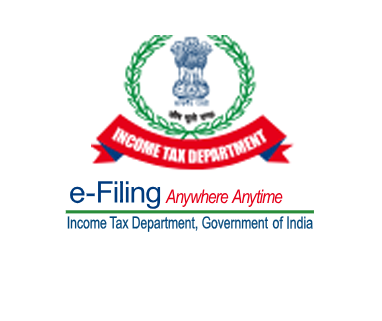INCOME TAX RETURNS 2025-26 AY


To file your Income Tax Return (ITR) for Assessment Year (AY) 2025–26 in India, here’s what you need to know:
🔹 Key Dates
-
Financial Year (FY): 2024–25 (i.e., income earned from 1 April 2024 to 31 March 2025)
-
Assessment Year (AY): 2025–26 (i.e., when you assess and file return for FY 2024–25)
-
ITR Filing Due Dates:
-
31 July 2025: For individuals (not requiring audit)
-
31 October 2025: For businesses requiring audit
-
🔹 Who Should File?
-
Individuals earning above the basic exemption limit (₹2.5 lakh / ₹3 lakh / ₹5 lakh depending on age and regime).
-
Professionals, freelancers, and business owners.
-
If you have foreign income or assets.
-
If TDS has been deducted and you want a refund.
-
If filing is mandatory due to certain high-value transactions.
🔹 Which ITR Form to Use?
| Form | Who Should Use |
|---|---|
| ITR-1 (Sahaj) | Salaried individuals (income up to ₹50 lakh), pensioners, one house property |
| ITR-2 | Individuals/HUFs with capital gains, multiple properties, foreign income |
| ITR-3 | Business/profession income (proprietors, freelancers) |
| ITR-4 (Sugam) | Presumptive income (under Sections 44AD, 44ADA) |
🔹 Documents You May Need
-
PAN and Aadhaar
-
Form 16 from employer(s)
-
Form 26AS and AIS (Annual Information Statement)
-
Bank statements
-
Investment proofs (ELSS, PPF, LIC, etc.)
-
Interest certificates (FDs, savings accounts)
-
Home loan statements (if applicable)
-
Rent receipts (for HRA)
-
Capital gains statements (if applicable)
🔹 Steps to File ITR Online
-
Log in to the Income Tax e-Filing portal
-
Select ‘e-File’ > ‘Income Tax Return’
-
Choose AY 2025–26, the applicable form, and filing type (original or revised)
-
Fill in the details or pre-fill and verify
-
Validate all entries and calculate tax
-
Submit and e-verify (using Aadhaar OTP, net banking, etc.)
For Assessment Year (AY) 2025–26—covering income earned between April 1, 2024, and March 31, 2025—the income tax slabs in India are structured under two regimes: the Old Tax Regime and the New Tax Regime.
🧾 Old Tax Regime (Optional)
This regime allows taxpayers to claim various exemptions and deductions (like HRA, LTA, 80C, 80D, etc.).
For Individuals Below 60 Years of Age:
-
Up to ₹2,50,000: Nil
-
₹2,50,001 – ₹5,00,000: 5% of the amount exceeding ₹2,50,000
-
₹5,00,001 – ₹10,00,000: ₹12,500 + 20% of the amount exceeding ₹5,00,000
-
Above ₹10,00,000: ₹1,12,500 + 30% of the amount exceeding ₹10,00,000www.bajajfinserv.in+4Income Tax Department+4Referencer+4ICICI BankIncome Tax Department+2Income Tax Department+2Income Tax Department+2
For Senior Citizens (60–79 Years):
-
Up to ₹3,00,000: Nil
-
₹3,00,001 – ₹5,00,000: 5% of the amount exceeding ₹3,00,000
-
₹5,00,001 – ₹10,00,000: ₹10,000 + 20% of the amount exceeding ₹5,00,000
-
Above ₹10,00,000: ₹1,10,000 + 30% of the amount exceeding ₹10,00,000Income Tax DepartmentICICI BankIncome Tax Department+1Income Tax Department+1
For Super Senior Citizens (80 Years and Above):
-
Up to ₹5,00,000: Nil
-
₹5,00,001 – ₹10,00,000: 20% of the amount exceeding ₹5,00,000
-
Above ₹10,00,000: ₹1,00,000 + 30% of the amount exceeding ₹10,00,000Income Tax Department+6Income Tax Department+6Income Tax Department+6
🆕 New Tax Regime (Default)
Introduced under Section 115BAC, this regime offers lower tax rates but does not allow most exemptions and deductions.Income Tax Department+4Reuters+4Income Tax Department+4
Applicable to All Individuals:
-
Up to ₹3,00,000: Nil
-
₹3,00,001 – ₹6,00,000: 5% of the amount exceeding ₹3,00,000
-
₹6,00,001 – ₹9,00,000: ₹15,000 + 10% of the amount exceeding ₹6,00,000
-
₹9,00,001 – ₹12,00,000: ₹45,000 + 15% of the amount exceeding ₹9,00,000
-
₹12,00,001 – ₹15,00,000: ₹90,000 + 20% of the amount exceeding ₹12,00,000
-
Above ₹15,00,000: ₹1,50,000 + 30% of the amount exceeding ₹15,00,000Income Tax DepartmentICICI BankIncome Tax Department+1Income Tax Department+1
Note: Under the New Tax Regime, a standard deduction of ₹50,000 is available for salaried individuals and pensioners.Groww
⚠️ Surcharge and Cess
-
Surcharge: Applicable on income exceeding ₹50 lakh, ranging from 10% to 37% based on income levels.
-
Health & Education Cess: An additional 4% on the total tax (including surcharge).
📝 Choosing Between the Two Regimes
-
Old Tax Regime: Beneficial if you have significant deductions and exemptions to claim.
-
New Tax Regime: Simpler with lower tax rates but fewer deductions; may be advantageous if you have minimal exemptions.
It’s advisable to compute tax liability under both regimes to determine which is more beneficial for your specific financial situation.
